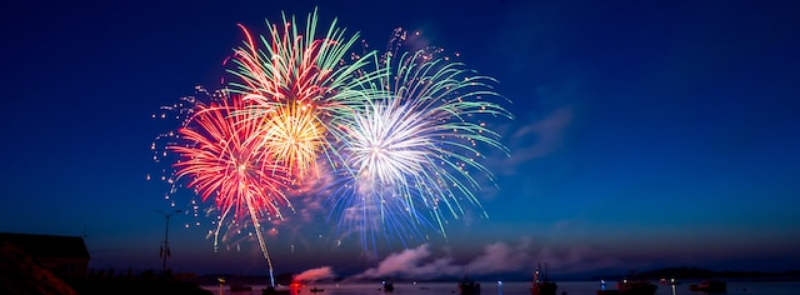
When It Occurs
Every December 31st
Timeline
Days Passed (683)
# Hashtags
#NewYearsEve #NewYearCountdown
In the Gregorian calendar, New Year's Eve, alternatively known as Old Year's Day or Saint Sylvester's Day in various countries, marks the evening or the entirety of the final day of the year, occurring on 31 December. This day is widely recognized as "New Year's Eve." Celebrations in many countries involve dancing, feasting, drinking, and the observation or ignition of fireworks. Some Christians partake in a watchnight service. Typically, the festivities extend beyond midnight, ushering in New Year's Day on 1 January.
Origins and History
The concept of celebrating the new year dates back thousands of years, with ancient civilizations such as the Babylonians holding festivals to mark the beginning of the agricultural cycle. In the UK, celebrating New Year’s Eve has roots in both Celtic and Roman traditions, though the modern observances are largely a product of the medieval and Victorian eras.
The United Kingdom follows the Gregorian calendar, which places New Year’s Eve on December 31st, and it has become a night associated with partying, reflection, and resolution-making.
Key Traditions and Celebrations
New Year’s Eve in the UK is marked by a variety of customs and celebrations, ranging from large public gatherings to more intimate family events:
-
Fireworks Displays:
- One of the most iconic aspects of New Year’s Eve in the UK is the large-scale fireworks displays. The most famous of these takes place in London, where thousands gather along the banks of the River Thames to watch the fireworks explode over Big Ben, the London Eye, and other landmarks.
- The London fireworks show begins at midnight, when Big Ben chimes, signaling the start of the new year. The display typically lasts around 10 minutes and is accompanied by music and light shows. Tickets are often required for certain areas to view the event live, but it is also broadcast on television for millions to enjoy across the UK.
- In other cities, such as Edinburgh, Manchester, and Belfast, fireworks are also a key part of the celebrations, with many local authorities organizing public events.
-
Hogmanay in Scotland:
- Scotland’s New Year’s Eve celebration, known as Hogmanay, is perhaps the most famous of all UK celebrations. Hogmanay festivities in Edinburgh are world-renowned, often lasting for several days and featuring street parties, concerts, and fireworks.
- One of the most significant traditions during Hogmanay is “first footing”. This custom involves the first person to cross the threshold of a home after midnight bringing good luck for the coming year. Traditionally, the first foot should be a dark-haired man, who brings symbolic gifts such as coal, shortbread, or whisky.
- The torchlight procession and street parties in Edinburgh attract thousands of visitors from around the globe, making it a unique and unforgettable celebration.
-
London’s Big Ben and the Thames:
- As midnight approaches in London, crowds gather near the Palace of Westminster, eagerly awaiting the chimes of Big Ben to mark the start of the new year. The riverbanks are packed with people watching the fireworks light up the sky over the River Thames.
- After the fireworks, the mood shifts as people across the UK sing “Auld Lang Syne”, a traditional Scottish song written by Robert Burns. This nostalgic tune, often accompanied by linking arms and swaying, reflects on the passage of time and is a hallmark of New Year’s celebrations.
-
Parties and Nightlife:
- Across the UK, New Year’s Eve is synonymous with parties. Pubs, bars, and clubs host special events, often with themes, live music, and countdowns. Cities like London, Manchester, and Birmingham see major nightclubs offering tickets for all-night events, while smaller towns may host communal celebrations.
- House parties are also popular, with friends and family gathering for food, drink, games, and celebrations that culminate in a countdown to midnight.
- One tradition that has faded in recent years but was once popular was watch night services at churches, where people would gather to pray and reflect on the past year before the clock struck midnight.
-
New Year’s Resolutions:
- Like many parts of the world, making New Year’s resolutions is a common practice in the UK. It’s a time when people reflect on the past year and make promises or set goals for the coming one, often focusing on personal improvement such as getting healthier, saving money, or learning new skills.
-
Television Specials:
- For those who prefer a quieter celebration, staying in and watching New Year’s Eve television specials is a popular option. The BBC traditionally airs coverage of the London fireworks display, as well as live performances by major artists and celebrity hosts.
- Programs like “Jools’ Annual Hootenanny”, hosted by Jools Holland, are staples of New Year’s Eve television, offering live music and entertainment right up until the stroke of midnight.
New Year’s Day Traditions
New Year’s Eve celebrations in the UK naturally lead into New Year’s Day, which is a public holiday and often a quieter, more reflective day spent with family or recovering from the night’s festivities. Key traditions include:
- New Year’s Day Parades: In London, the New Year’s Day Parade is a major event, with marching bands, floats, and performers taking to the streets. It’s a family-friendly occasion and attracts large crowds.
- New Year’s Day Walks: Many people take advantage of the day off to go for a walk in the countryside or local parks, embracing the idea of fresh starts and new beginnings.
- New Year’s Day Dips: In some coastal towns, it’s traditional to start the year with a cold-water dip, often for charity. Locations like Brighton and Whitley Bay host these events, where brave participants run into the icy sea.
Public Holiday Status
New Year’s Day, which follows New Year’s Eve, is a bank holiday across the UK. If January 1st falls on a weekend, the following Monday is observed as a public holiday. This gives people a chance to recover from the celebrations and enjoy time with family and friends. Many businesses and schools remain closed on this day.
Safety and Responsible Celebrations
New Year’s Eve in the UK can be a busy and sometimes chaotic night, with large crowds, public transport issues, and increased alcohol consumption. Police and local authorities often provide additional security in major cities, and public transport is extended to accommodate late-night revelers, often providing free services after midnight.
Many organizations also promote responsible drinking and designated drivers to ensure everyone enjoys the night safely.
Conclusion
New Year’s Eve in the UK is a vibrant and festive celebration that brings together a mix of ancient traditions, modern partying, and communal reflection. From the spectacular fireworks displays over the Thames and the lively Hogmanay celebrations in Scotland to intimate family gatherings and bustling nightclubs, the country welcomes the new year with energy, joy, and hope for what’s to come. Whether you’re singing “Auld Lang Syne” with friends or watching the fireworks on TV, New Year’s Eve in the UK is a time of celebration, renewal, and connection.


